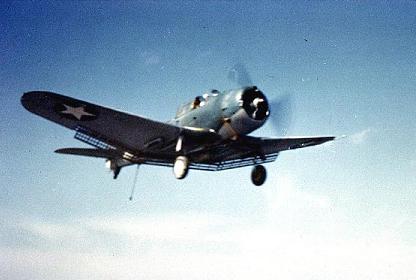Xenophon
Gone and forgotten
Tough US Navy dive-bomber
It seems that obsolescence made little difference to the performance of certain aircraft of the Second World War and among this elite, the sturdy Douglas 'Dauntless' dive-bomber ranked high. First ordered in April 1939, when it was considered the world's best all round dive-bomber, it went into service in November 1940 but was considered to have had its day as early as 1941. Even so, the Dauntless was still a doughty contender, able to survive much heavy punishment and in fact, no American carrier aircraft suffered fewer casualties. In improved versions during 1943, it was even able to outclass and outdive its ostensibly more powerful and more modern successor, the Grumman SB2C Helldiver.
Classed as a carrier-borne scout and dive bomber, the Dauntless was used in its later career as an anti-submarine or close support aircraft. A neat and compact 33ft long and 13ft 7 ins high, it had a wingspan of 41 ft 6 ins and a wing area of 325 sq ft . It was powered by one l,200hp Wright R-l 820-60 Cyclone radial engine. Maximum speed at 15,800ft was 245 mph and 252 mph at 13,800ft. Cruising speed was 139 mph and service ceiling 24,300 ft .
Armament consisted of two fixed forward-firing .5 in machine guns, in front of the fuselage, two flexible .3 in rear cockpit machine guns and a maximum bomb load of 1,600lbs under the fuselage with an additional underwing bomb load of 200 lbs, or 250lbs of depth charges. The range of a Dauntless carrying a 1,000lb bomb was 1,115 miles and there was a two-man crew.
In December 1941, Dauntlesses of the USN and USMC suffered heavily during the treacherous Japanese attack on Pearl Harbor. However, the aircraft brought a considerable revenge upon the Japanese in the battles of the Coral Sea and Midway in 1942. The 'obsolete' Dauntless was still in front line service in June 1944, when it took part in the battle of the Philippine Sea. More remarkably it was in French Navy service for many years after 1945.
So versatile was this type it was even used as in interceptor during the early Pacific battles, and shot down a number of Japanese aircraft.
It seems that obsolescence made little difference to the performance of certain aircraft of the Second World War and among this elite, the sturdy Douglas 'Dauntless' dive-bomber ranked high. First ordered in April 1939, when it was considered the world's best all round dive-bomber, it went into service in November 1940 but was considered to have had its day as early as 1941. Even so, the Dauntless was still a doughty contender, able to survive much heavy punishment and in fact, no American carrier aircraft suffered fewer casualties. In improved versions during 1943, it was even able to outclass and outdive its ostensibly more powerful and more modern successor, the Grumman SB2C Helldiver.
Classed as a carrier-borne scout and dive bomber, the Dauntless was used in its later career as an anti-submarine or close support aircraft. A neat and compact 33ft long and 13ft 7 ins high, it had a wingspan of 41 ft 6 ins and a wing area of 325 sq ft . It was powered by one l,200hp Wright R-l 820-60 Cyclone radial engine. Maximum speed at 15,800ft was 245 mph and 252 mph at 13,800ft. Cruising speed was 139 mph and service ceiling 24,300 ft .
Armament consisted of two fixed forward-firing .5 in machine guns, in front of the fuselage, two flexible .3 in rear cockpit machine guns and a maximum bomb load of 1,600lbs under the fuselage with an additional underwing bomb load of 200 lbs, or 250lbs of depth charges. The range of a Dauntless carrying a 1,000lb bomb was 1,115 miles and there was a two-man crew.
In December 1941, Dauntlesses of the USN and USMC suffered heavily during the treacherous Japanese attack on Pearl Harbor. However, the aircraft brought a considerable revenge upon the Japanese in the battles of the Coral Sea and Midway in 1942. The 'obsolete' Dauntless was still in front line service in June 1944, when it took part in the battle of the Philippine Sea. More remarkably it was in French Navy service for many years after 1945.
So versatile was this type it was even used as in interceptor during the early Pacific battles, and shot down a number of Japanese aircraft.








